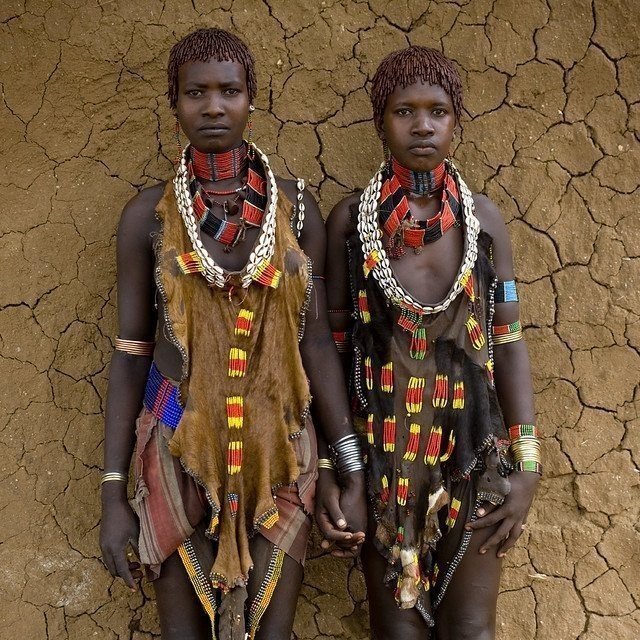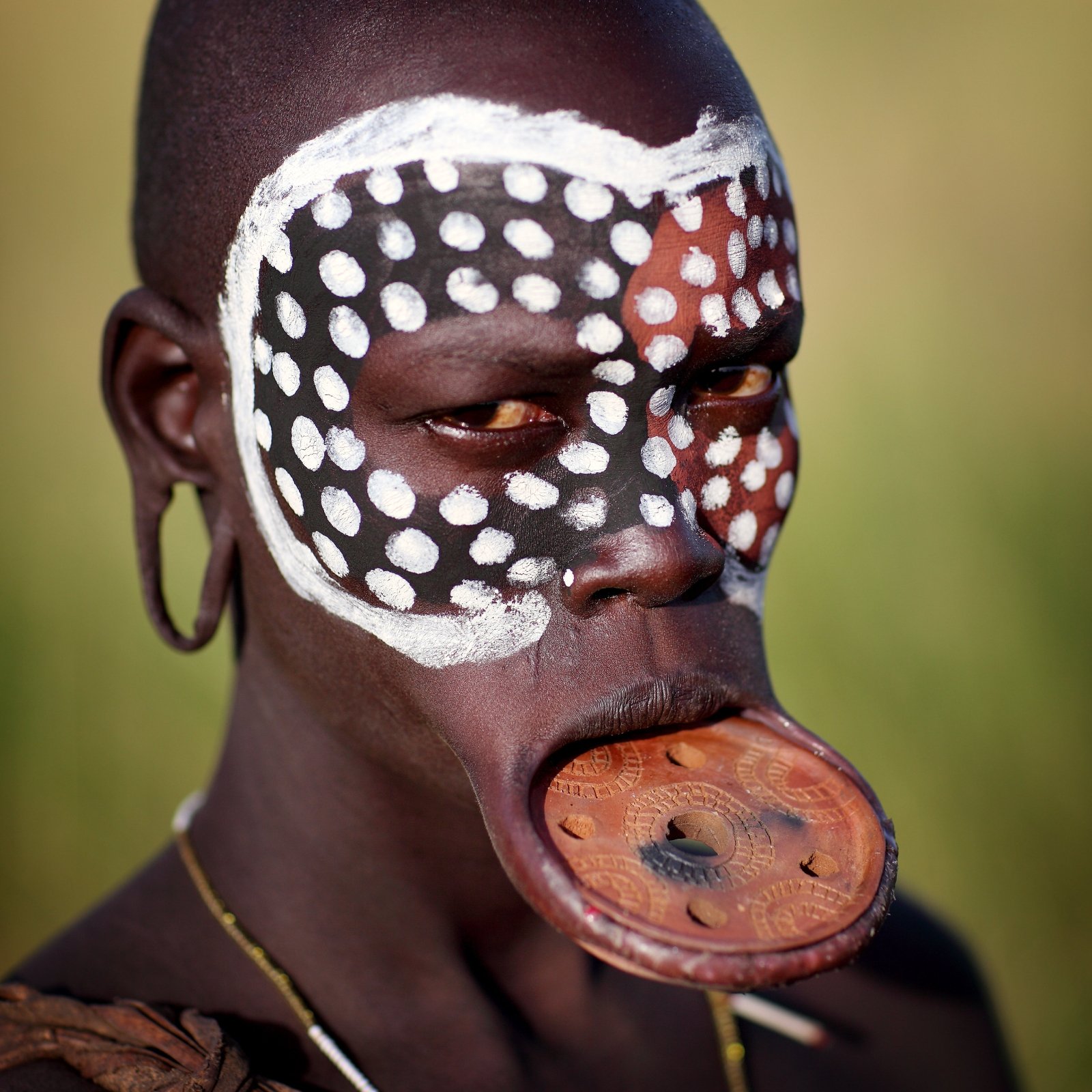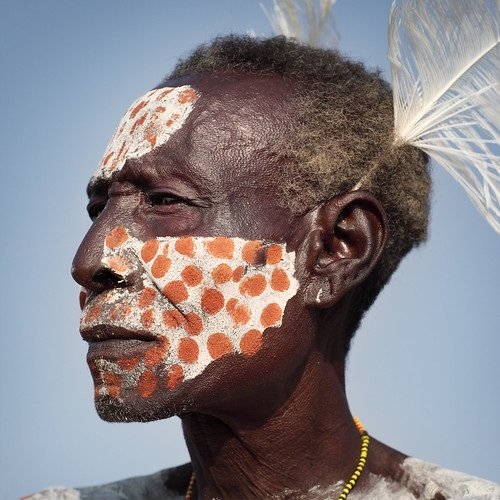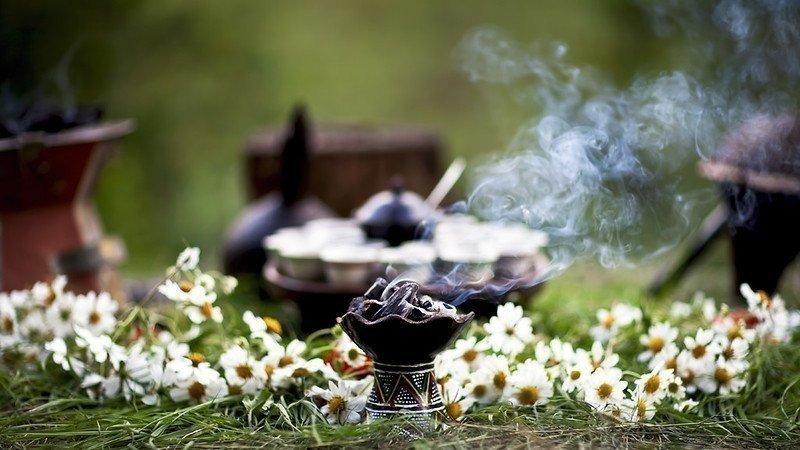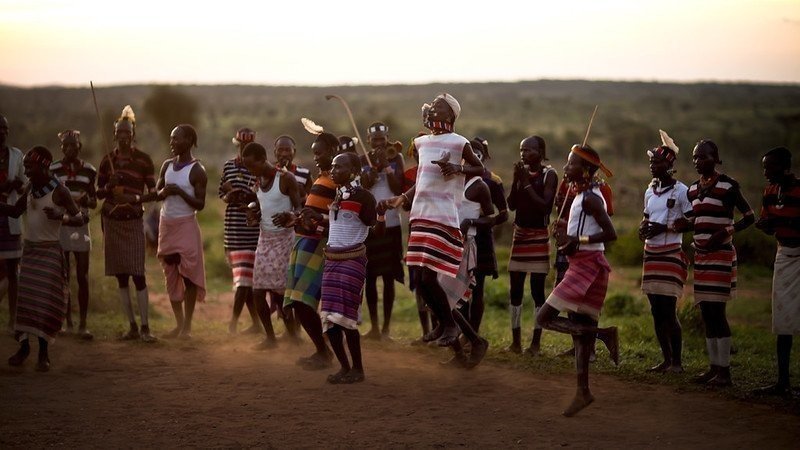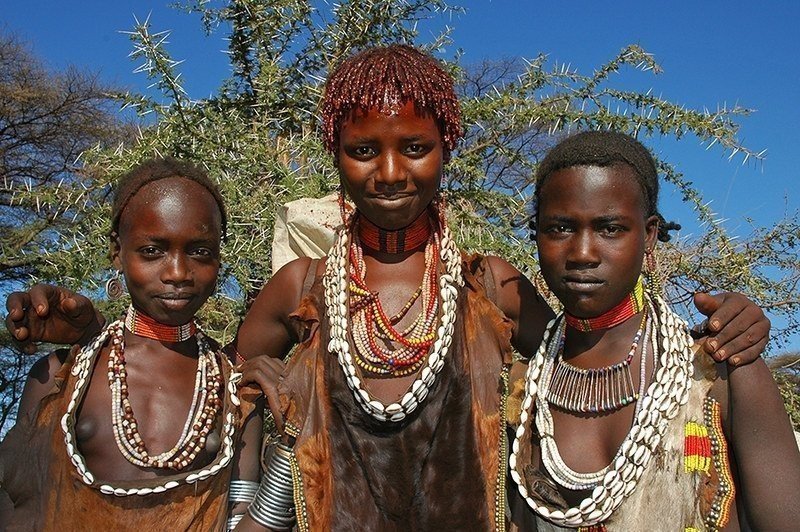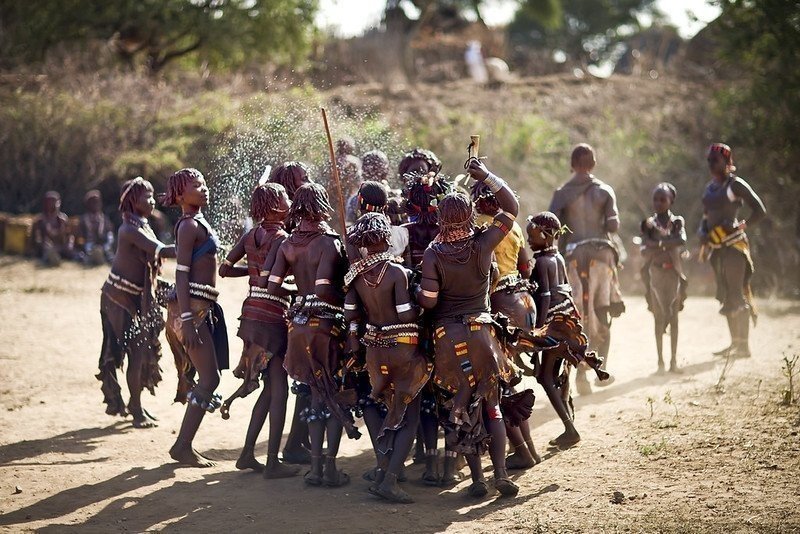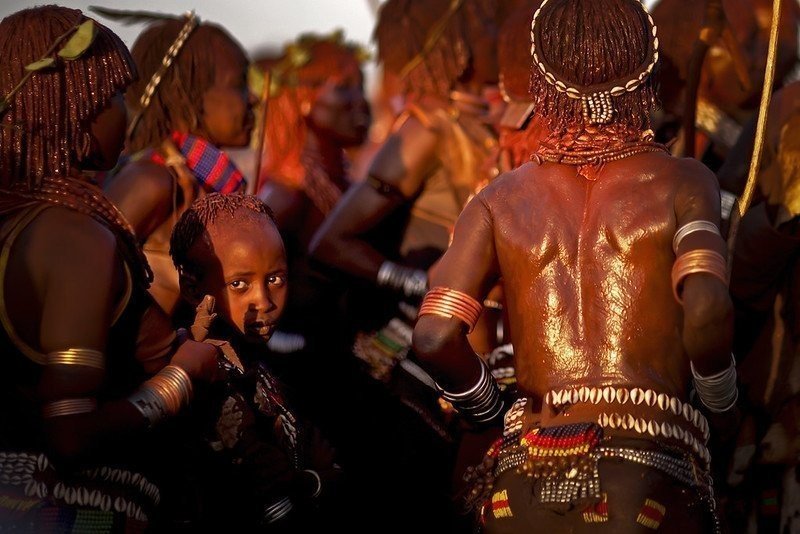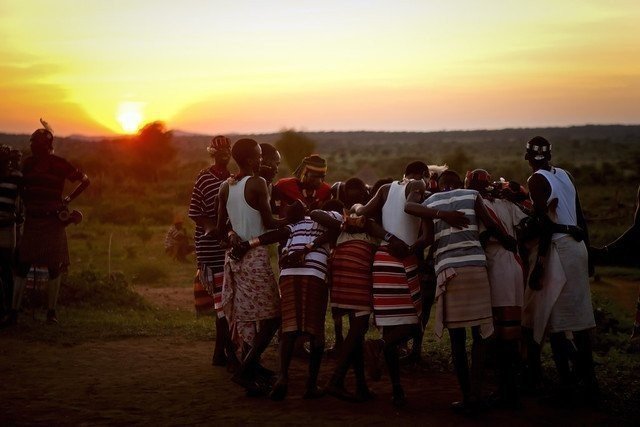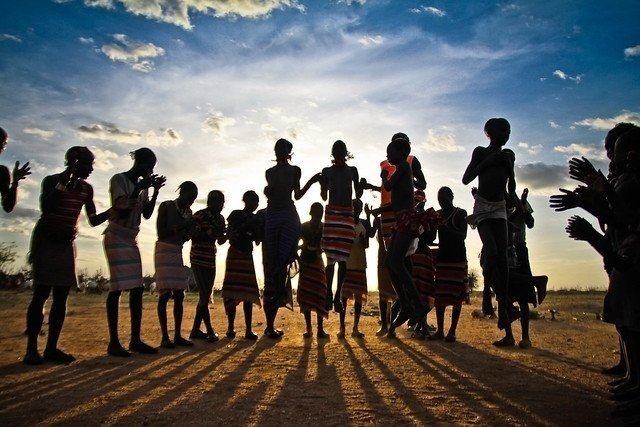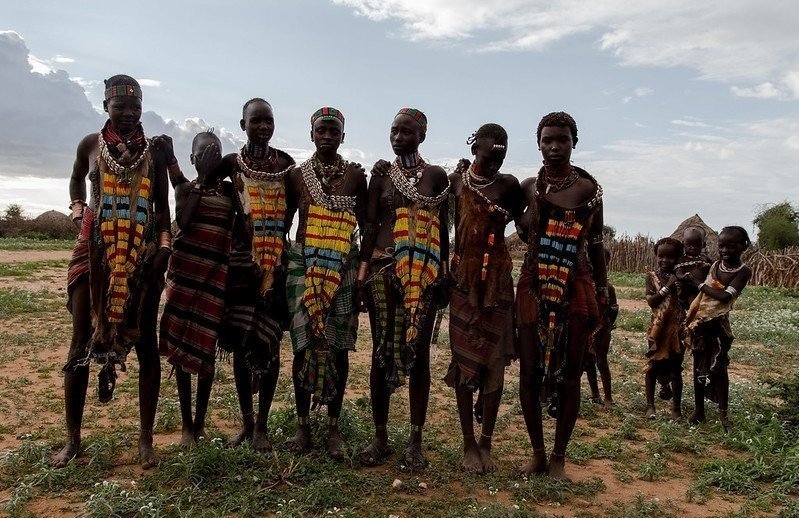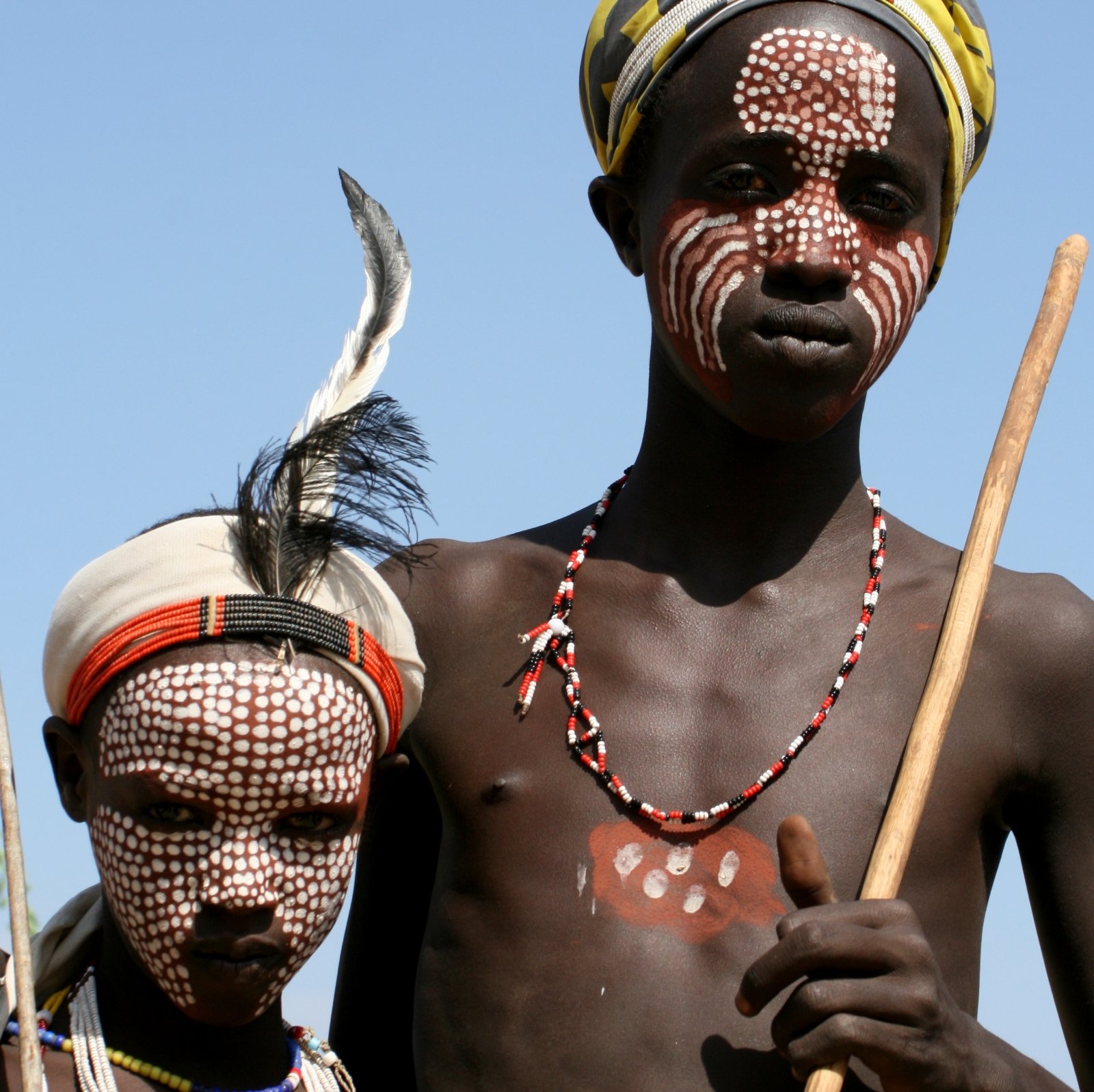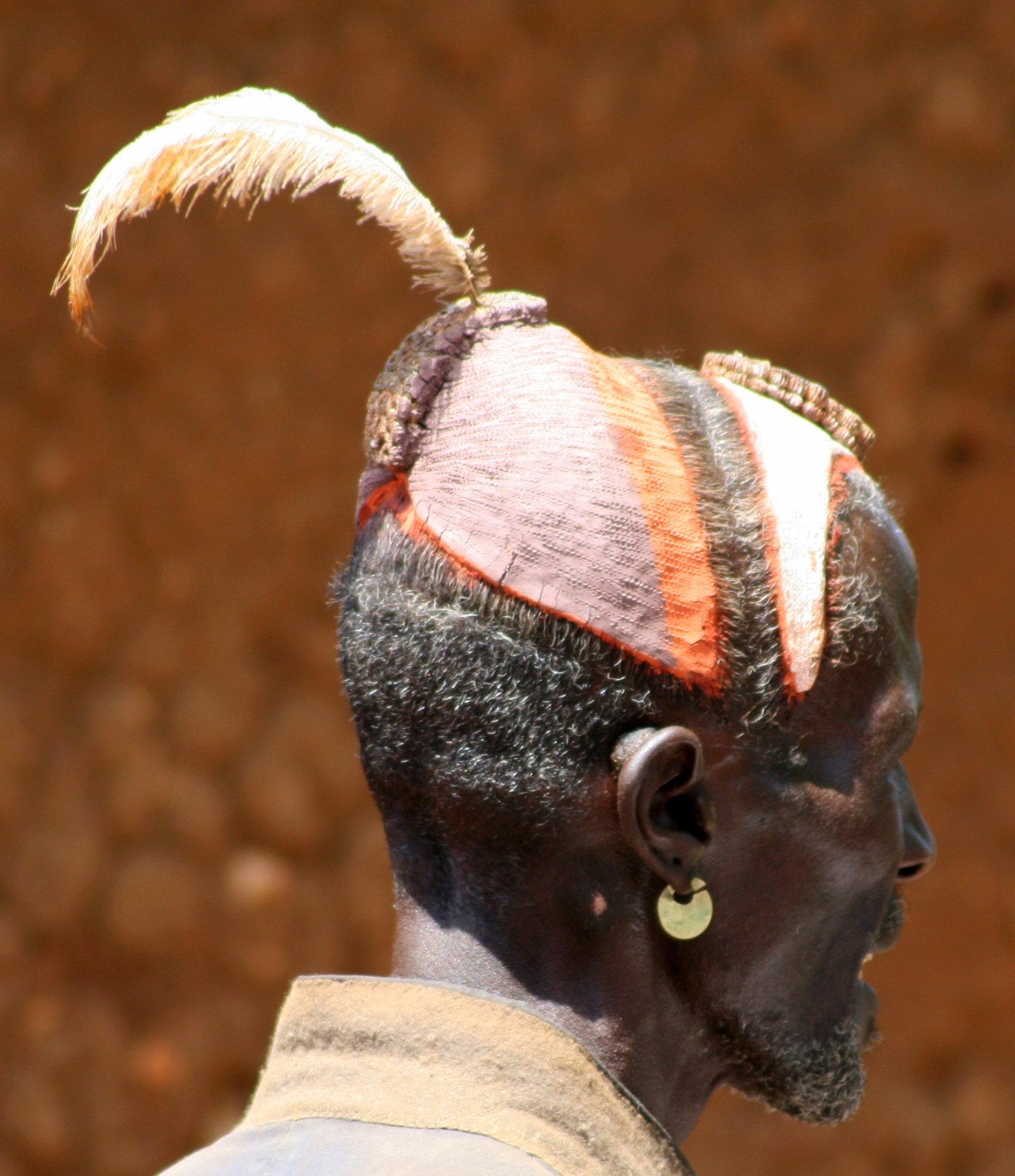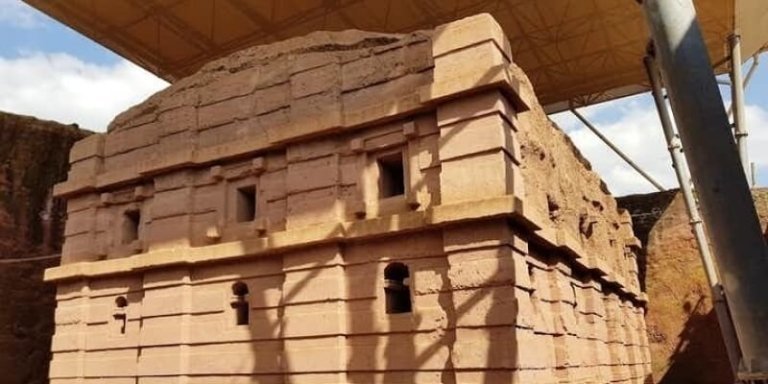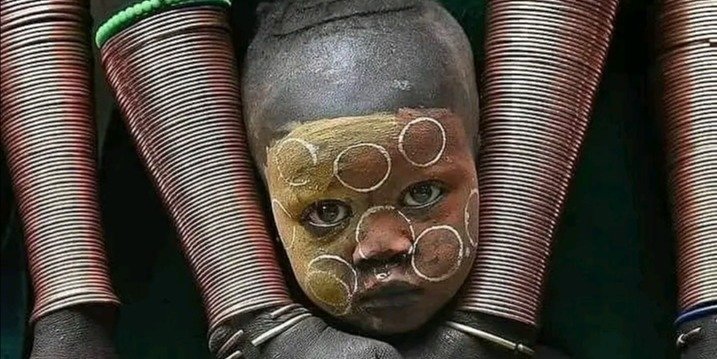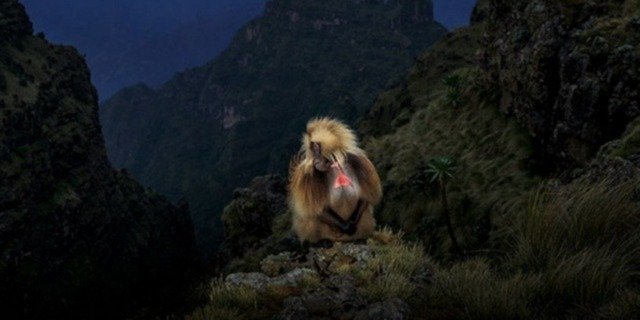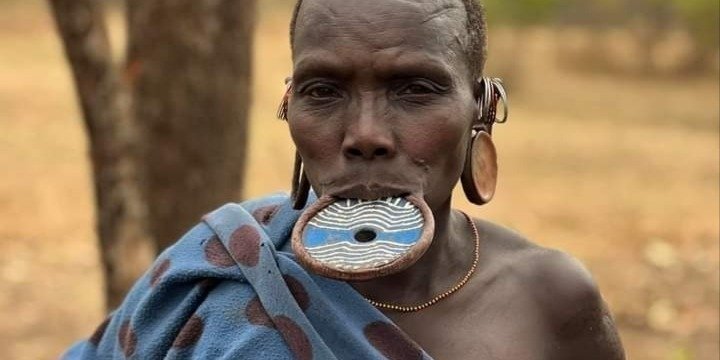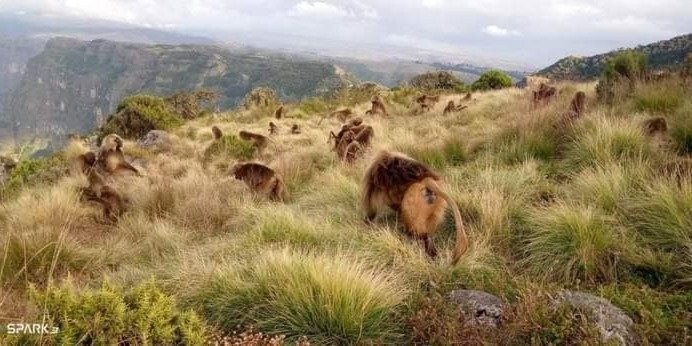All the eleven churches represent a unique artistic achievement, in their execution, size and the variety and boldness of their form.The King of Lalibela set out to build a symbol of the holy land, Read more ➤
Authentic Cultures of South Omo Valley Tribes
-
Duration - 6 days
-
Guide optionsEnglish, German, Spanish, French, Italian, Chinese - Mandarin, Arabic
-
Cancellation PolicyStandard
Overview
The southern cultural route usually known as Omo Valley in Southern Ethiopia is a little visited area of Ethiopia containing several of the most vibrant and fascinating tribes and ethnic groups. The charming costumes, colorful rituals and celebrations, arts, crafts, music, local market.
Highlights
- Cultural Experiance
- Untouched culture
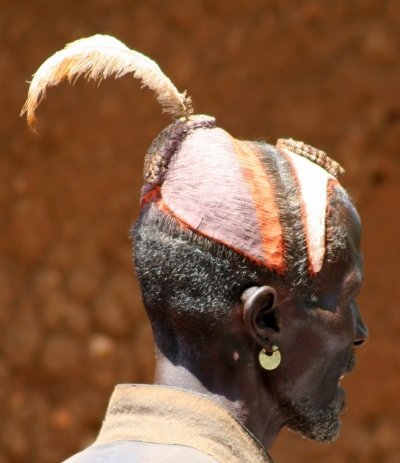
Description
Authentic Cultures of South Omo Valley Tribes
The southern cultural route usually known as Omo Valley in Southern Ethiopia is a little visited area of Ethiopia containing several of the most vibrant and fascinating tribes and ethnic groups. The charming costumes, colorful rituals and celebrations, arts, crafts, music, local market and dance of the Dorze, Konso, Ari, Benna, Hamer, Mursi, Karo, Geleb, Arbore and Borena people are special ones to name a few. In the Omo Valley region, many of the tribal groups have changed little over hundreds of years and they offer the visitor extraordinary insight into a variety of traditional cultures. On the trip, you get truly off the beaten track, exploring little visited villages and vibrant tribal markets of the Southern Ethiopia.
The lower valley of the Omo unlike any other place on Earth has the largest diversity of ethnically different groups in the whole of Ethiopia and possibly in Africa. A voyage to the Omo Valley is a true expedition to encounter some of the most remarkable tribal peoples on Earth! To this day, the Omo Valley remains rich in traditional culture and human history.
What's included
- Inclusions:
- Accommodation 5 nights /Double or Twin Bed/
- Drinking water, up to 4 liters per person per day for 4 days
- Local Guides – (service of local guides during site visits)
- All entrance fees, as per itinerary
- Pick up and Drop off
- All ground transportations with fuel /Ground transportation air conditioned 4X4/
- Meal on fallboard (5 breakfast, 6 lunches and 6 dinners) including either soft drinks or bottle
- professional guide and driver allowance
- Government Tax
- Exclusions:
- Domestic and International airfare
- Personal expense like souvenirs, laundry, …
- Tips, video or special photographing fees at person in any village tribes
- Visa expenses
- Any alcoholic drinks
- Any expense which is not stated in the ‘Included List’ above
Itinerary
- Visited Places:
- Arba Minch
- Jinka
- Turmi
- Karat
- Hawassa
DAY 01 - ARRIVAL AND FLY TO ARIBAMINCH
Welcome to join the 6 days Ethiopia tour packages! Upon your arrival at Bole International Airport and you will clear immigration and proceed to baggage claim, after collecting your checked bags, clear customs and pass through the arrivals hall where you will be meet by FINOT TOUR ETHIOPIA tour guide or representative, who will assist you with your transfer to your hotel.
Early in the morning, we make fly to Arba Minch and drive to the shore of the lake to have a boat trip on Lake Chamo, Boat trip on Lake Chamo is along the best anywhere in Ethiopia. One can spot many Hippos and the world's most spectacular concentrations of Giant Nile Crocodiles, which measure about 6 meter with the water birds, are great the scenery is truly unforgettable then further drive to Jinka. Lunch stop at Karat Konso and continue drive late afternoon arrival to Jinka.
Meals: Breakfast, Lunch and Dinner
Drinks: Bottled water and soft drink in the car and meal time
Transportation: Domestic Flight and Land Cruiser 4X4, Boat
Accommodation: Jinka Resort or Similar
CONSULTANT NOTE
Start Time: Morning 06:30 AM
Ending Time: Afternoon 5:30 PM - 6:00 PM
Distance covered: 250 km
Road Condition: 245 km asphalted and 5 km all weather road
Time duration: 6-7 hours with visit, lunch and photo stops
Activity: Drive, boat ride and visit
Depart ADD 07:40 arrive AMH 08:45, flight 1 hour and 05 minutes, flight number ET171 (De Havilland Bombardier DHC-8 Dash 8) Economy
DAY 02 - VISIT MURSI TRIBES AND DRIVE TO TURMI
After an early breakfast, you will leave Jinka and drive to Mursi village to visit and appreciate the very attractive culture of Mursi tribe. They are renowned for the strange custom followed by their women who, on reaching maturity, have their lower lips slit and circular clay discs inserted, The Mursi people are primarily pastoralists. They reside in the western regions of the Mago National Park, and move between the lower Tama Steppe, where they spend the wet season, and the Mursi Hills sector of the Park, where they spend the dry season. They have a population of around 5,000 and they speak a language that belongs to the Central Surma-East Sudanic branch of the Nilo-Saharan language family. Like the Bume, they practice flood retreat agriculture on the Omo River, and hunt occasionally. They also smoke out the hives of bees, found all over the National Park, in order to consume the rich honey. The Mursi women wear lip plates that they make from locally derived clay. The plates are considered an important aesthetic asset. Based on our visiting date and time we drive to Key-Afer Market to attend the weekly colorful market of the different tribes. Then continue drive to Turmi for overnight.
Meals: Breakfast, Lunch and Dinner
Drinks: Bottled water and soft drink in the car and meal time
Transportation: Land Cruiser 4X4
Accommodation: Emerald Lodge or Similar
CONSULTANT NOTE
Start Time: Morning 07:30 AM
Ending Time: Afternoon 5:30 PM - 6:00 PM
Distance covered: 245 km
Road Condition: 135 km asphalted and 110 km all weather road
Time duration: 6-7 hours with visit, lunch, pee, photo stops …
Activity: Scenic drive and visit
REMARK –
Prepare enough cash /10 Ethiopian birr per one photo one person/ if you want to take photos of or with the tribe people. To avoid unnecessary chaos, it is better to ask the tour guide before you take pictures.
If there is any ceremonial activity like traditional dance, Bull jumping ceremony, your guide will inform you prior.
DAY 03 - VISIT DASENECH AND KARO TRIBES
This morning we start driving south to Omorate to visit another tribe, the Dasenech (formerly known as Geleb), and one of their villages. These people inhabit the areas bordering with Kenya, north of Lake Turkana, and they live on the east and west bank of the Omo River. The Geleb Covering a large territory, the Geleb live along the western banks of the Omo River, having been forced out of the Turkana region by conflict in the 18th century. Originally nomadic pastoralists, the more fertile surroundings of the Omo River has caused them to put down more permanent roots based around fishing and agriculture. The Geleb live in small huts that befit their nomadic origins, as they could easily dismantle. Women wear a pleated cow skin skirt with necklaces and bracelets. Men wear a checkered cloth around their waist only. We drive back Turmi and we have lunch in our lodge.
After lunch, we continue through the savannah along tracks that are barely visible, passing through a vast meadowland with shrubs and umbellifers (‘umbrella’ acacia trees) for an excursion to Morulle and Kangatan Village. The Nyangatom live south of Omo National park and occasionally migrate in to the lower regions of the park when water or grazing is scarce. Numbering around 6,000-7,000 in population, the Nyangatom are agro pastoralists, relying on cattle herding and floor- retreat agriculture (consisting mainly of sorghum harvesting on the Omo and Kibish Rivers). The Nyangatom tend to indulge in honey and frequently smoke out beehives in the park to get the honey inside the nests. The Nyangatom are known to be great warriors and quite frequently, active warmongers, they are often at war with the neighboring tribes including the Hamer, the Karo and the Surma. Here you will cross the Omo River and take a short walk through the local fields to visit a village of the Nyangatom tribe. The elders of both sexes wear a lower lip plug, the men’s being made from ivory and women’s made from copper filigree. After the visit, return across the river and proceed to the Karo village of Korcho, with a stunning location look in over the Omo River. The Karo people, while the smallest tribe of the Omo Valley in number, are also known to be the most decorated. After the visit, return to Turmi for another opportunity to see Jumping of the Bulls
Meals: Breakfast, Lunch and Dinner
Drinks: Bottled water and soft drink in the car and meal time
Transportation: Land Cruiser 4X4
Accommodation: Emerald Lodge or Similar
CONSULTANT NOTE
Start Time: Morning 07:30 AM
Ending Time: Afternoon 5:30 PM - 6:00 PM
Distance covered: 300 km
Road Condition: 274 km asphalted and 26 km all weather road
Time duration: 7-9 hours with visit, lunch, pee, photo stops …
Activity: Drive and visit
REMARK –
Prepare enough cash /10 Ethiopian birr per one photo one person/ if you want to take photos of or with the tribe people. To avoid unnecessary chaos, it is better to ask the tour guide before you take pictures.
If there is any ceremonial activity like traditional dance, Bull jumping ceremony, your guide will inform you prior.
DAY 04 - DRIVE TO ARBAMNICH VIA ERBORE
In the morning, we drive back to Aribaminch via woita road on the way visiting the Erbore people. Relatively large, Arbore is far more rustic and unaffected than many similarly size towns in south Omo, in common with their linguistically and culturally affiliated Tsemai neighbors, the Arbore migrated to their present homeland from Konso perhaps two centuries ago. Because they have ancestral and cultural links to Konso and the pastoralists of the surrounding lowlands, the Arbore traditionally played an important role as intermediaries in trade between the Omo River and the Konso Highlands. The town of Arbore lies in an area where several tribal boundaries coverage. In addition, the Arbore people routinely intermarry with other ethnic groups. It is also inhabited a substantial number of Hamer and even Borena women – adding a cosmopolitan feel to the worthwhile Saturday market.
Meals: Breakfast, Lunch and Dinner
Drinks: Bottled water and soft drink in the car and meal time
Transportation: Land Cruiser 4X4
Accommodation: Mora Height Lodge or Similar
CONSULTANT NOTE
Start Time: Morning 08:00 AM
Ending Time: Afternoon 05:30 PM - 06:00 PM
Distance covered: 268 km
Road Condition: 178km asphalted and 90 km all weather road
Time duration: 7-8 hours with visit, lunch, pee, photo stops …
Activity: Drive and visit
NB: You will have visit Erbore tribe depends on the road condition.
DAY 05 - DRIVE TO HAWASSA
After breakfast this morning, we will commence another long yet scenic drive to Hawassa via Wolatya Sodo. On the way, we will also pull over to visit the Dorze Village high up in the Guge Mountains, 17kms northwest of Arbaminch to Gughe Mountains to visit the Dorze villages. Once warriors, the Dorze have now turned to farming and weaving to earn a living. They speak an Omotic tongue and the Dorze name is synonymous with the best-woven cotton cloth. The “elephant huts” of the Dorze are unique and worth seeing. In addition, the Dorze beehive-shaped houses are constructed entirely of organic material and has its own small garden surrounded by beds of spices, cabbage and tobacco. Some of Ethiopia’s best-woven cottons come from Chencha Town, which is located 8 km northwest of Dorze Village. Men weave and women spin. Continue your drive pass through land, which produces the best banana, papaya, apple and mango in Ethiopia for the world market. The Alaba people are very famous for their beautiful home painting style. After lunch, drive to coffee farm to spend the day surrounded by coffee plantations that produce Sidama coffee, one of the three coffee brands of the well-known Arabica coffee.
Meals: Breakfast, Lunch and Dinner
Drinks: Bottled water and soft drink in the car and meal time
Transportation: Land Cruiser 4X4
Accommodation: Heroine Hotel or Similar
CONSULTANT NOTE
Start Time: Morning 08:30 AM
Ending Time: Afternoon 05:30 PM - 06:00 PM
Distance covered: 242 km
Road Condition: 242 km asphalted road
Time duration: 6-7 hours with visit, lunch and photo stops
Activity: Drive and visit
DAY 06 - DRIVE TO ADDIS ABABA AND DEPARTURE
On this day we leave Hawassa, drive to Awash National Park by road. Visit “Amora Gedel”-the daily fishing market on the shore of Lake Hawassa and get really close to pelicans, storks and other birds very much used to human company. On the way, we visit Abijata and Shall National Park.
After we visit drive to Addis Ababa. Early in the afternoon, we arrive in Addis Ababa and have time for souvenir shop anything you want to do before departure. This evening we enjoy a traditional Ethiopian buffet dinner and local drinks, celebrating our journey through this culturally rich and fascinating country. After dinner, you will have transferred to the Bole International Airport in Addis Ababa for your onward flight, bringing this unique Ethiopia South Omo Valley Tribes Nine Days Tour an end. Thanks for booking our tour package.
Meals: Breakfast, Lunch and Dinner
Drinks: Bottled water and soft drink in the car and meal time
Transportation: Land Cruiser 4X4
Accommodation: -
CONSULTANT NOTE
Start Time: Morning 08:00 AM
Ending Time: Afternoon 05:30 PM - 06:00 PM
Distance covered: 275 km
Road Condition: 275 km asphalted road
Time duration: 6-7 hours with visit, lunch and photo stops
Activity: Drive and visit
End of Tour!
NB: The tour program can be modify differently, rearranged, combined with other itinerary and shorten or extended to suit your interest, time and budget. Up on request FINOT TOUR ETHIOPIA can arrange various tour programs based on your interest.
Frequently Asked Questions
How much time does the Authentic Cultures of South Omo Valley Tribes take?
Authentic Cultures of South Omo Valley Tribes duration is 6 days.
Book Authentic Cultures of South Omo Valley Tribes now just with Booking Deposit on TripsPointHow many days in advance I must book Authentic Cultures of South Omo Valley Tribes?
You can book Authentic Cultures of South Omo Valley Tribes at least in 5 days. Check availability calendar in "Book Now" form to see currently available dates.
Book Authentic Cultures of South Omo Valley Tribes now just with Booking Deposit on TripsPointtraveler reviews
You may also like
Omo Valley Tour Ethiopia Omo Valley Tours Ethiopia is a locally owned and operated tours based in Jinka, Ethiopia. Omo Valley Tours Ethiopia provide it visitors with the best of historical, cultural Read more ➤
North historical Ethiopia and southern Ethiopia cultural tour. Great Ethiopia Tour with amazing and well desined tour and excellent guide. the tour will be unforgettable and real experience. Read more ➤
Home to several indigenous tribes, each with their unique culture and customs, Omo Valley remains one of Africa’s most extraordinary experiences. Visitors here can witness traditional lifestyles a Read more ➤
Panoramic Simiens Tour is a private tour company which is based in Ethiopia and necessarily provides private and group tours in tourist destinations. Services and offers are food and beverage, Read more ➤

